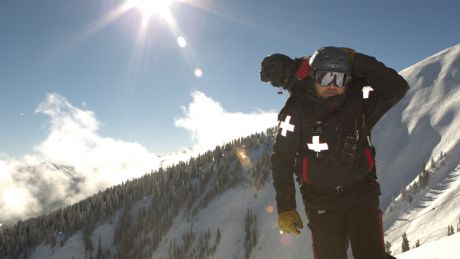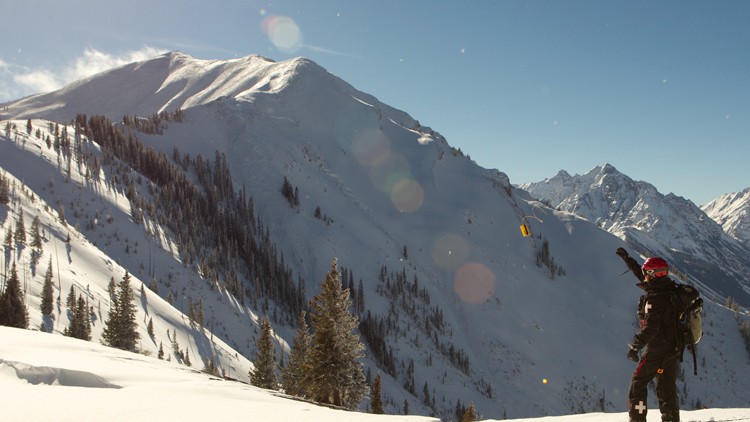On the slopes with the ski patrol
What’s it like to be the person responsible for safety and order at some of the most dangerous sports venues in the world? MF finds out

Ski patroller Chris Halsey knows his sport can be dangerous. He’s dealt with twisted ligaments, lacerations and broken bones. He’s even witnessed a couple of fatalities – one caused by head injury, the other where a skier was impaled on a tree.
But nothing prepared him for what he found in the snowy woods of Aspen Highlands in March 2013. Earlier that day a snowboarder had made a grisly discovery and called the emergency services. Halsey was one of those sent out to investigate.
‘I was first on the scene,’ the 48-year-old recalls. ‘Even when I saw the body I didn't suspect what had really happened. I thought the guy must have skied into a tree. His body had since been mauled by animals so it was unrecognisable.’
It was when Halsey spotted a gun that he realised this was no skiing accident. Tragically, the man – a local wine dealer called Jeff Walker – had shot himself. Apparently he’d come to the Aspen Highlands to spend his last moments in a place of beauty.
Mountain rescue
Although incidents like this are rare, Halsey’s job involves its fair share of drama. As one of Aspen Highlands’ 40 or so ski patrollers, he is trained to rescue injured skiers in a whole spectrum of scenarios ranging from sprained knees all the way up to avalanches. His job is a curious combination of policeman, paramedic and mountain rescuer. Some of the tasks are fairly mundane, such as patrolling the slopes for fallen trees before the start of each day, and for fallen skiers at the end of each day.
‘We ski around, yelling,’ he says. ‘That way, if there’s someone lying in the woods with a knee injury, they’ll hear us. But we have to be really attentive. There are places on this mountain where you could hide a marching band. It would take a thousand people to sweep every inch.’

There are more exciting duties, too – like blowing up stuff. As with many ski resorts, avalanches can be lethal, burying unwary skiers alive. Ski patrollers pre-empt them by using explosives to dislodge loose snow in a controlled way. This is mostly done pre-season, before the skiing public arrives. First off they use canons mounted on the side of the hill to shoot missiles up into the avalanche-prone areas. Then they move in close and throw small grenades.
Get the Coach Newsletter
Sign up for workout ideas, training advice, reviews of the latest gear and more.
Make the cut
Another method they use to trigger avalanches is something called ski-cutting. ‘We zip across the potential path of the avalanche in a zigzag, to dislodge the loose snow,’ Halsey. ‘This knocks the energy out of a potential avalanche.’
Backing up the team of human ski patrollers are four dogs trained in snow rescue. The three labradors and one Australian shepherd search out avalanche victims buried beneath the snow. ‘They can smell through really deep snow,’ Halsey explains. ‘During a drill I was once buried beneath two metres of snow and the dog was on me in seconds.’
Up to ten times a week, Halsey and his colleagues find themselves attending to injured skiers – springtime, when the snow is hard and fast, is most dangerous – and have to be prepared for everything from minor collisions to skiers that have crashed off the piste altogether. Halsey remembers one Italian tourist who had lost control and skied straight off the edge of a cliff.
‘He ended up tangled up in the trees with a back injury. It was super-steep terrain, we couldn't get a good footing, the ground underneath was frozen and we had to make sure he didn’t slip away from us.’ The patrollers eventually managed to move him into one of their toboggans and transported him down the mountain to safety but not without an endurance-sapping climb down to him and a few hairy attempts where the skier started to slide closer to the drop.
Bowl over
Fitness is crucial in this job. All patrollers must be able to ski expertly in deep snow, across any terrain; manoeuvre toboggans with injured skiers aboard; and be able to hike to the top of the Highland Bowl (3,774m at the summit) with 20kg of gear and skis on their back. But the toughest fitness test of all is right at the start of the season when the patrollers spend a whole month compacting the fresh snow in the Highland Bowl so that it’s secure to ski on – a process known as boot-packing. They spend five gruelling hours a day, five days a week, marching around often in deep snow. ‘That’s more strenuous than any workout I’ve ever done,’ Halsey says. ‘In total it amounts to 700 man-days of boot-packing.’
Although very few of the patrollers do gym work (‘We get our workouts on the mountains’), Halsey says there’s proof that many of them are super-fit. Every year a race called the Highland Bowl Inferno is staged in Aspen, with competitors required to run 260m through the snow up to the top of the Highland Bowl before skiing down 800 vertical metres to the bottom of the mountain. Halsey says there are often as many as five patrollers in the first ten people across the line. The course record is under 26 minutes.
The strongest among the patrollers is a local legend called Brian Johnson. ‘Nobody’s faster than Brian,’ Halsey says. ‘He’s a world-class athlete. For training he once did ten laps of the Inferno in one day. That’s hardcore.’
Thanks to Aspen Snowmass resort, Helly Hansen clothing and The Little Nell hotel.
